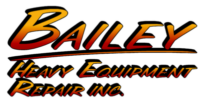What Is Line Boring?
Proper line boring is essential in making many types of machinery run smoothly, including engines of all types. This is a precise undertaking that requires exacting specifications, specialized equipment and lots of experience to get the job done right.
How does line boring work? Read on to find out more about what all goes into line boring.
Line boring, defined
There are many different types of line boring, but simply put, line boring can be boiled down to enlarging a hole that has already been cast in a piece of metal. The reason for this is to line up two holes and make them collinear.
This is common in machines like engine blocks, turbines, presses and more. If holes are misaligned or not collinear, the resulting vibration can cause the machine to shut down or malfunction in other ways.
Line boring process
Here’s how line boring works. First, the holes are lined up to their centers. Then a boring head is drilled through the holes to make their diameters even. This must be very precise and may require a variety of specialized tools.
Line boring can take anywhere from a few hours to multiple weeks. For complex jobs, an engineer may come out to the site and inspect the equipment that needs repair. Measurements will be taken and the tools needed will be identified and readied for use.
It might be the case that custom line boring needs to be done, especially if worn-out bores need to be returned to factory specifications. In this case, repair sleeves may need to be installed to decrease the size of a bore rather than widening another bore to match a worn-out one.
In the case of large machinery repair, line boring can be done on-site. This can be a cost-effective solution when compared to buying a new machine. It can also be much more efficient, as line boring work can often be completed faster than waiting for a new machine to be delivered and installed.
Why you may need line boring work
There are many reasons why line boring may be necessary for your equipment. Sometimes bore issues are the result of hydraulic pressure loss or just heavy use of the equipment over time. Other times, the bushings or bearings may have seized up, leading to bore damage.
Line boring can help restore worn-out or otherwise damaged or out-of-round bores. It can also help restore the correct bore alignment (this is often known as align boring). Line boring can also help change or correct bore centers or alignment.
The process of line boring is highly specialized and should always be performed by an experienced professional. When you need line boring or if you want to know more about what all goes into line boring before deciding if you need it done, get in touch with the team at Bailey Heavy Equipment Repair, Inc. today. We are ready to handle all your line boring needs in our shop or on-site for heavy machinery and equipment.
